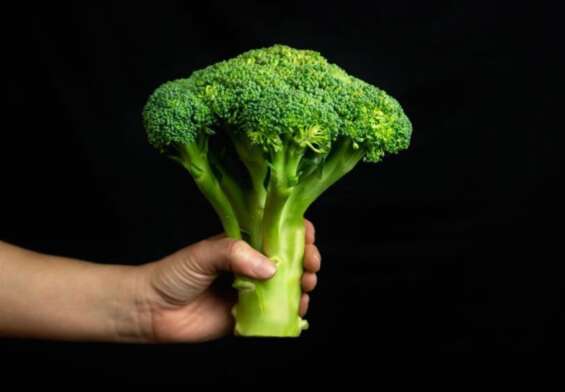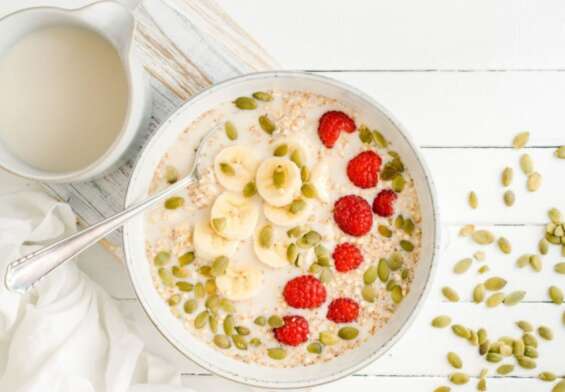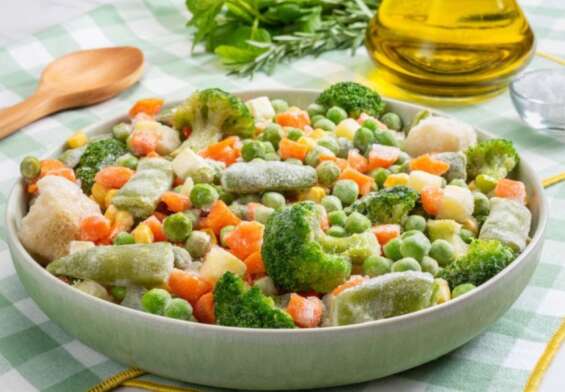
Casein-Free Diet: Managing Dairy Sensitivities and Allergies
A casein-free diet is a type of dietary plan that eliminates all dairy products containing the protein casein. This includes milk and other dairy products, such as cheese, yogurt, and ice cream. People who follow a casein-free diet may also eliminate processed foods that contain casein, such as lunch meats and packaged snacks. The diet is often adopted to reduce the symptoms of food sensitivities, allergies, and other digestive and health issues. This diet can be challenging to follow, as it eliminates many common food sources, but it can be beneficial for those who have difficulty digesting casein.
What are the Benefits of a Casein-Free Diet?
If you’re looking for a diet that’s sure to make you the life of the party, look no further than the casein-free diet! With its many benefits, this diet is sure to give you an edge when it comes to having fun and feeling your best.
First off, the casein-free diet can help you avoid bloating and weight gain. By eliminating casein, a milk protein found in animal products, you’ll be able to reduce your calorie intake while still maintaining a healthy and balanced diet. Plus, since casein is linked to inflammation, avoiding it can help reduce inflammation and improve your overall wellbeing.
Another great benefit of the casein-free diet is that it’s cruelty-free. By cutting out animal products, you’ll be doing your part to help protect animals from exploitation and abuse.
Finally, the casein-free diet is a great way to reduce your carbon footprint. Since animal products are some of the most environmentally damaging foods, eliminating them from your diet is a great way to reduce your impact on the planet.
So if you’re looking for a diet that’s sure to make you the life of the party, why not give the casein-free diet a try? With its many benefits, you’ll be able to have a good time while doing your part to protect the environment, animals, and your own health. Cheers!
How to Transition to a Casein-Free Diet
Are you ready to kiss that casein goodbye? If so, you’ve come to the right place! Here are the steps you need to take to transition to a casein-free diet.
Step 1: Get Educated
The first step to making any lifestyle change is to learn about it. Read up on what casein is, why you might want to avoid it, and what foods contain it. This will help you identify which foods need to be eliminated from your diet and which are safe to eat.
Step 2: Make a Meal Plan
Now that you know the basics, it’s time to get creative in the kitchen. Brainstorm some meals that are both casein-free and delicious. You can also search online for recipes and meal ideas.
Step 3: Stock Your Pantry
Now that you’ve got a few meal ideas, it’s time to stock your pantry. Make sure to have plenty of casein-free staples on hand, such as grains, legumes, fruits, and veggies.
Step 4: Get Organized
The last step is to get organized. Keep a list of the foods you can and can’t eat, so you know what to look out for when grocery shopping or dining out.
And that’s it! You’re now ready to make the switch to a casein-free diet. Bon appetite!
What Foods are Allowed in a Casein-Free Diet?
Are you done with dairy? Don’t worry, there are plenty of delicious, casein-free food options out there! Here’s a list of some of the best casein-free treats:
- Fruits and veggies: Apples, oranges, carrots, beets, spinach, kale, and more.
- Grains: Rice, quinoa, millet, buckwheat, and oats.
- Legumes: Lentils, peas, beans, chickpeas, and peanuts.
- Nuts and seeds: Almonds, walnuts, cashews, sunflower seeds, and pumpkin seeds.
- Dairy substitutes: Soy milk, almond milk, coconut milk, hemp milk, and oat milk.
- Oil and fats: Coconut oil, olive oil, avocado oil, and other plant-based oils.
- Animal proteins: Fish, eggs, and tofu.
- Condiments: Mustard, vinegar, and sugar-free sauces.
- Sweeteners: Maple syrup, agave nectar, and stevia.
So, there you have it! You don’t have to go without delicious food if you follow a casein-free diet. Bon appétit!
What are the Most Common Food Intolerances with a Casein-Free Diet?
Ah, the dreaded casein-free diet! It can be a real source of frustration for many, especially if you’re trying to avoid certain food intolerances. But don’t worry – we’ve got your back. Here’s a list of the most common food intolerances to watch out for if you’re avoiding casein:
- Dairy: This one’s a no-brainer. All dairy-based products, including milk, cheese, butter, yogurt, and ice cream contain casein and should be avoided at all costs.
- Gluten: Gluten is a protein found in wheat, barley, and rye, and can cause digestive issues for those who have an intolerance.
- Soy: Soy is often used as a dairy-free alternative, but it can also cause digestive issues for those with a casein-free diet.
- Corn: Corn is often used in processed foods, but it can also be a source of casein.
- Nuts: Nuts, such as peanuts and cashews, can also contain traces of casein, so it’s best to avoid them if you’re trying to stay casein-free.
- Eggs: Eggs are another common source of casein, so you’ll want to avoid them as well.
- Processed Meat: Processed meats such as hot dogs, bacon, and sausages can contain casein, so it’s best to avoid them.
- Vegetable Oils: Vegetable oils such as canola, corn, and soybean oil can also contain traces of casein, so it’s best to avoid them as well.
So there you have it – the most common food intolerances to watch out for on a casein-free diet. With a bit of careful planning, you can still enjoy delicious meals without any of the dreaded casein!
How to Read Ingredient Lists for a Casein-Free Diet
Ah, the dreaded ingredient list! Those long, intimidating words that you can’t even pronounce, let alone understand. Don’t worry, I’m here to help! Here are some tips for deciphering ingredient lists and finding casein-free products:
Beware of cow-based ingredients: Casein is a milk protein, so steer clear of anything that contains “milk,” “skimmed milk,” “whey,” or “lactose.”
Look for casein-free substitutes: Instead of using dairy products, look for alternatives such as almond milk, coconut milk, and soy milk.
Check for hidden ingredients: Common culprits include sodium caseinate and calcium caseinate, so scan the list for these words.
Ask questions: If you’re still unsure about an ingredient, don’t hesitate to reach out to the manufacturer for more information.
With these tips, you’ll be able to read ingredient lists like a pro and make sure you’re avoiding any casein-containing products. Bon appétit!
How to Tell if a Product Contains Casein
Are you trying to avoid casein, but you’re worried that you don’t know how to tell if a product contains it? Well, don’t fret! We’ve got some tips that will help you out.
Read the label. This might seem obvious, but it’s always worth a try. If the product contains casein, it will be listed as an ingredient.
Check for sneaky names. Sometimes, manufacturers will try to hide the fact that a product contains casein by using different names for it. Look out for terms like “whey protein concentrate” or “milk protein isolate” – these could indicate the presence of casein.
Listen for rumblings. If you’re checking out a product in a store, you can sometimes hear other shoppers talking about whether it contains casein or not. This is a great way to get the inside scoop!
Do a Google search. If you still can’t figure out whether a product contains casein, do an online search. Chances are, somebody else has already asked the same question and you’ll be able to get an answer.
If all else fails, you can always just ask the manufacturer. They’ll be able to tell you definitively whether their product contains casein or not.
What are the Alternatives to Dairy Products in a Casein-Free Diet?
The casein-free diet is a popular choice for those who suffer from food allergies and sensitivities. But what do you do when you want to enjoy your favorite dairy-based treats? Well, fear not! There are plenty of dairy-free alternatives that are just as delicious as the real thing.
Let’s start with milk. There are a variety of nut-based milks on the market that are perfect for cereal, smoothies, and baking. Almond milk, soy milk, oat milk, and coconut milk are all excellent choices. Or, if you want a more traditional milk taste, you can try rice milk or hemp milk.
Cheese is a staple in many diets, and there are plenty of non-dairy cheese substitutes to choose from. Nutritional yeast is a great way to get that cheesy flavor without the dairy. It’s also a great source of B vitamins, so it’s a win-win. Or, you can try store-bought vegan cheese options like Daiya or Follow Your Heart.
When it comes to ice cream, there are many delicious dairy-free frozen desserts to choose from. There are vegan ice cream alternatives made from coconut milk, cashew milk, or almond milk. Or, you can try frozen treats like sorbet or frozen fruit bars.
Eating a casein-free diet doesn’t have to mean giving up your favorite dairy treats. With a little bit of creativity, you can find tasty alternatives that are just as delicious as the real thing.
How to Maintain a Balanced Nutrition with a Casein-Free Diet
If you’ve decided to go casein-free, you may be wondering how you can maintain a balanced nutrition. It’s not as hard as you think! Here are some tips to help you get started on your casein-free journey:
Fill up on fruits and veggies. Fruits and vegetables are a great source of vitamins, minerals, and antioxidants. Add them to your meals and snacks to get a healthy boost of nutrition.
Get creative with your proteins. Protein is an essential component of a balanced diet, but if you’re avoiding casein, you’ll need to be creative with your sources. Try beans, nuts, seeds, and tempeh for plant-based options. If you eat fish, eggs, and poultry, those are good sources of protein as well.
Choose whole grains. Refined grains are stripped of essential nutrients, so opt for whole grains instead. Whole grains contain fiber, B vitamins, iron, and other minerals that are important for health.
Snack on nuts and seeds. Nuts and seeds are a great source of healthy fats and they make a great snack. Try mixing them with dried fruit or oats for a delicious and nutritious treat.
Don’t forget the healthy fats. Healthy fats are important for a balanced diet, so don’t forget to include them in your meals. Avocados, olives, nuts, and seeds are all good sources of healthy fats.
Have fun in the kitchen. The best way to ensure that your diet is balanced is to get creative in the kitchen. Experiment with new flavors and textures and you’ll be sure to find delicious meals that will keep you healthy and happy.
With a bit of creativity and some careful planning, you can easily maintain a balanced nutrition with a casein-free diet. Bon appetit!
What are the Best Sources of Protein for a Casein-Free Diet?
If you’re looking for protein sources that don’t contain any casein, then you’ve come to the right place! There are plenty of delicious and nutritious options that are sure to keep you feeling full and satisfied. Here are some of the best sources of protein for a casein-free diet:
- Legumes: Beans, lentils, and other legumes are a great source of plant-based protein and can easily be incorporated into any meal.
- Nuts and Seeds: From almonds and cashews to chia and hemp, nuts and seeds are packed with protein and are great for snacks or adding to salads and dishes.
- Tofu: Tofu is a great source of protein and can be prepared in countless ways. Try adding it to stir-fries, soups, and curries!
- Tempeh: Tempeh is made from fermented soybeans and is a great source of protein. It tastes great in sandwiches and salads.
- Quinoa: Quinoa is a grain-like seed that is high in protein and full of other nutrients.
So there you have it – the best sources of protein for a casein-free diet! Give one (or all) of these options a try and you’ll be sure to stay full and satisfied!
How to Avoid Cross-Contamination with a Casein-Free Diet
Are you trying to stick to a casein-free diet but worried about cross-contamination? Don’t worry; you can still enjoy all your favorite foods without worrying about cross-contamination ruining your diet! Here are a few tips to help you stay on track:
Get creative in the kitchen: Cook with ingredients that are naturally casein-free, such as fruits, vegetables, grains, nuts, and legumes. You can even make substitutions for dairy-based ingredients in your recipes, like using almond milk instead of cow’s milk.
Read labels carefully: Be sure to check food labels for casein and other dairy ingredients, and avoid any products that contain them.
Be wary of restaurants: Ask restaurant staff about the ingredients they use in their dishes before ordering. Many restaurants are happy to accommodate special diets and may be able to provide a casein-free option.
Don’t forget about cross-contamination: Even when you’re eating casein-free foods, be sure to look out for cross-contamination. For example, if you’re buying something pre-packaged, make sure the packaging hasn’t come in contact with dairy products.
Following these tips will help you stay on track with your casein-free diet without worrying about cross-contamination. So go forth and enjoy your delicious, casein-free meals without fear!
How to Manage Eating Out with a Casein-Free Diet
Do you have a casein-free diet and find yourself struggling to manage eating out? Don’t worry, you’re not alone! Here are some tips to help you navigate the restaurant scene with ease – and maybe even a bit of humor.
Do your research. Before you go out, research the restaurant and menu ahead of time. Look for dishes that appear to be casein-free, and if possible, call ahead to confirm.
Don’t be afraid to ask questions. Ask your server or the chef about the ingredients in the dishes you are considering. Make sure to specify that you need to know if there are any dairy products, including casein.
Get creative. Don’t be afraid to ask the restaurant to customize dishes to make them casein-free. Most restaurants will be happy to accommodate.
Bring your own condiments. While many restaurants are happy to provide alternative condiments, it doesn’t hurt to bring your own just in case.
Embrace the side dish. Many times, the side dish can be the star of the show. Ask your server for vegetable or grain-based sides that are casein-free.
Make it fun. Eating out with a casein-free diet doesn’t have to be stressful. Make it an adventure and have fun with it!
Eating out with a casein-free diet is totally doable. With a bit of research, creativity, and confidence, you’re sure to find something delicious at your favorite restaurants. Bon appetit!
Conclusion
A casein-free diet can be a beneficial dietary plan for those with a sensitivity or allergy to casein, a protein found in dairy products. This diet eliminates all dairy products, which can make it difficult to follow for those who enjoy dairy in their diet. It is important for those considering a casein-free diet to do their research and consult a doctor or registered dietitian to ensure they are getting the necessary nutrients. Additionally, it is important to consider how this diet may impact social eating and other lifestyle habits. With careful planning, a casein-free diet can be a healthy and safe option for those with a sensitivity or allergy to casein.











